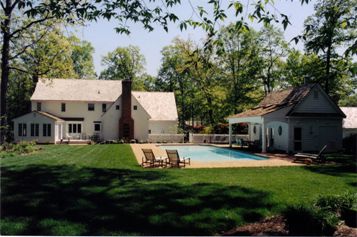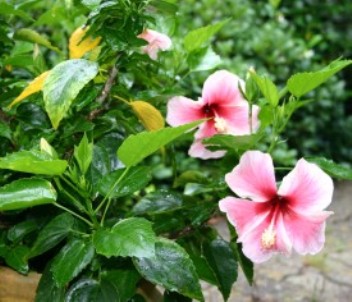


What a shame to see the lush green grass turn brown so early this summer. The hottest June on record was a bad start to the summer for lawns and other landscape plants. Fescue is a cool season grass and struggles in the summer heat anyway. I don’t think I’ve ever seen liriope (monkey grass) burn and turn brown until this year. Even junipers that are sun loving and drought resistant are not standing up to this heat. Be sure your plants are getting adequate water by testing the soil around the root ball. You should be able to push a 4-inch screw driver into the soil after watering. Watering is best done in the morning.
The summer is the time to put together a plan for over seeding your lawn. In July and early August, access what areas of your lawn have been taken over with weeds and wire grass. These areas should be sprayed with Round-Up, an herbicide that kills the weeds, but does not damage the soil. Wire grass may need two or even three applications of Round-Up. Start to spray by the end of July or early August to allow enough time for the weeds to die before over seeding in late August to early September. In areas that have a good stand of grass and some weeds, use products like Weed-B-Gone to kill the weeds and not the grass.
Do a soil test now to determine if the soil ph needs to be neutralized. Lawn likes a neutral ph and lime applications are necessary to combat our naturally acidic soil conditions. Lime can be applied any time to help correct an acid ph. Your lawn is best able to absorb nutrients and water, if the soil ph is in the neutral range. Contact the agricultural extension agent for your area to find out the best place to send your soil sample. Your lawn care professional can also help you with this task.

Flowers on shrubs, annuals and perennials seem to be withstanding the heat. My landscape is so fragrant when the flower laden
magnolias
and
gardenias
are in bloom together. Annuals like
lantana
and vinca are full and covered with flowers that will remain until frost. Veronica, a blue flowering perennial, keeps putting out new flowers all season. Hibiscus, a tropical shrub that is seen in this photo is beautiful in summer containers. It has multiple large exotic flowers on it daily. You can find this plant in solid and bi-colors and with single or double flowers.
Heat and all the watering that the summer demands is also a good formula for growing weeds. Weeding is a big chore in the summer. There are some products to help you.
Preen,
a pre-emergent herbicide, forms a barrier over the soil that does not let weed seeds germinate. It is available in granular form and is sprinkled on top of the mulch. This year, Preen introduced a
shredded bark mulch
that contains its pre-emergent herbicide. I think it could be good for small areas or top dressing existing mulch beds. Round-Up, a well-known herbicide, can also be used to control weeds in mulch beds. The weeds in open areas around trees and shrubs can be eliminated with Round-Up. Realize that it can kill groundcovers and other small plants if the leaves get drenched. It is not strong enough to kill larger plants, but can burn foliage if the spray hits it.
I hope the extreme heat we are having this summer does not make your days too unbearable or damage your beautiful landscaping too badly.
|

